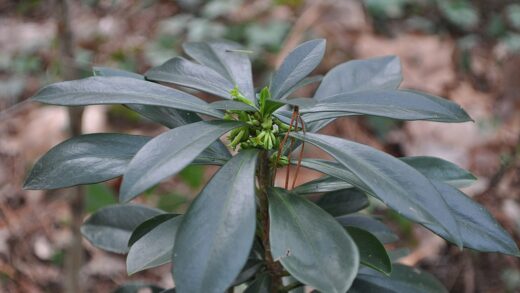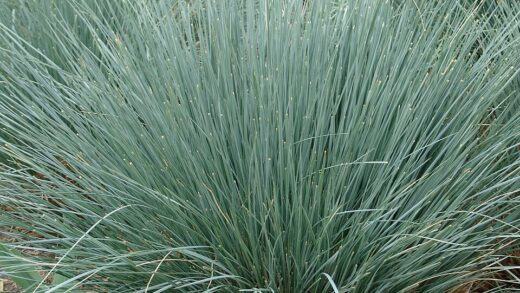Although a beloved, modest-looking ground cover for many, the common blue violet can sometimes cause problems due to its aggressive spreading habit. The key to keeping the plant in check and maintaining its aesthetic appearance is professional pruning and cutting back, which also serves the plant’s health. These interventions not only prevent excessive overgrowth but also stimulate the development of lusher foliage and richer flowering in the following season. Proper timing and technique are essential for its role in the garden to remain harmonious and not become an invasive weed. That is why it is important to learn the techniques to effectively manage this rapidly propagating perennial.
The primary purpose of pruning and cutting back is to control the spread of the common blue violet. This plant reproduces extremely effectively both through its underground rhizomes and its self-seeding capsules that form after flowering. Regular mowing with a lawnmower can be an effective method for preventing seed formation and suppressing the leaves of violets that have established in a lawn. In flower beds or rock gardens, however, manual cutting back is recommended, as it allows for more precise work and protects surrounding plants. This operation should be carried out after the main flowering period but before the seed capsules ripen, typically in late spring or early summer. Regular cutting back prevents the violet from taking over less vigorous inhabitants of the garden.
Maintaining the plant’s health and improving its appearance are also important considerations. The removal of spent flowers and damaged, diseased leaves, also known as deadheading, helps prevent the spread of fungal diseases such as powdery mildew or leaf spot. This continuous maintenance not only makes the stand more aesthetically pleasing but also focuses the plant’s energy on developing its root system and new, healthy shoots. During the end-of-season autumn cutback, the entire foliage can be cut back to ground level, which helps prevent pests and pathogens from overwintering and provides a clean, tidy base for the next spring’s growth. This seemingly more drastic intervention actually rejuvenates the plant.
The timing of pruning is a critical factor for success and largely depends on horticultural goals. If the goal is to stop the spread, the most important intervention is immediate cutting back after flowering to prevent the seeds from the cleistogamous (closed self-pollinating) flowers from ripening and dispersing. These inconspicuous, bud-like flowers are hidden under the leaves and produce a huge amount of seeds. If the goal is simply to refresh the stand and maintain its aesthetics, a thorough end-of-season cutback may be sufficient. Continuous, light pruning during the growing season, during which old parts are removed, contributes to the continuous renewal of the plant and the maintenance of a compact growth form.
The quality and condition of the tools used for pruning are also decisive. Always use sharp and clean tools, such as pruning shears, garden scissors, or even a lawnmower, for the task. Dull cutting edges damage the plant tissues, which opens the door for pathogens and slows down regeneration. Disinfecting tools before and after use, especially if diseased plant parts have been removed, is crucial to prevent the spread of diseases. This can be done with a hypochlorite-based disinfectant or even an alcohol solution. Careful tool selection and maintenance are as important a part of plant protection as the pruning technique itself.
More articles on this topic
Strategies to prevent spreading
The aggressive spreading ability of the common blue violet can pose a serious challenge for gardeners. One of the most effective, albeit most labor-intensive, ways to keep the plant in check is through manual weeding and rhizome removal. Young plants, especially from moist soil, are relatively easy to pull out with their roots intact. For older colonies with extensive root systems, however, using a garden fork is recommended to lift the underground runners as deeply and completely as possible. It is important to remove every piece of root, as even the smallest remaining rhizome segment can regrow. This method is particularly effective in flower beds and along borders where other plants are present.
Another effective strategy is the use of physical barriers that prevent the rhizomes from spreading further in the soil. Root barriers or edgings sunk into the ground, extending at least 15-20 centimeters deep, effectively block the path of the spreading roots. It is advisable to apply this solution at the time of planting if the intention is to confine the violet to a specific area, such as a designated part of a rock garden or a flower bed. The barrier can also be installed retroactively around existing stands, although this requires more earthwork. This proactive approach significantly reduces the amount of work associated with continuous weeding and cutting back in the long run.
Mulching can also help to suppress the spread of the common blue violet. A thick layer of organic mulch, at least 5-10 centimeters deep, such as bark, wood chips, or pine needles, smothers existing plants and makes it difficult for new seedlings to emerge. The mulch blocks light from reaching the soil surface, which is essential for germination, and also physically obstructs the weak shoots from breaking through. It is important to renew the mulch layer regularly, annually, as organic materials decompose over time and lose their thickness. This method is not only effective in weed control but also improves the soil’s water retention and structure.
In lawn areas, regular mowing set to a low height is one of the simplest ways to suppress violets. Although this method does not destroy the underground rhizomes, it effectively prevents flowering and seed formation, thus inhibiting further spread. Frequent mowing continuously weakens the plant by depriving it of the leaf surface necessary for photosynthesis, which can lead to the thinning of the stand over time. Maintaining a healthy lawn, with proper nutrient supply and irrigation, also helps make the grass more competitive against the violet. A dense, healthy lawn is much more resistant to the establishment of invasive species.
More articles on this topic
Aesthetic pruning and shaping
The aesthetic pruning of the common blue violet is primarily aimed at achieving a neat and tidy appearance. After the peak flowering period, removing spent flower stalks and yellowing, damaged leaves instantly refreshes the plant’s look. This process, known as deadheading, prevents the plant from wasting energy on seed production and instead encourages it to grow lusher foliage. A precise cut made with sharp hand scissors or pruning shears leaves a clean wound surface, allowing for faster healing. This type of care is especially important in borders, container plantings, or rock gardens, where each plant takes center stage.
Shaping the violet colony is also possible during the season. If the stand becomes too sprawling or sparse in the center, a more vigorous cutback can help to rejuvenate it. In early summer, after the main wave of flowering, the entire foliage can be cut back by about half. This intervention stimulates the plant to produce new, fresh shoots from the base, resulting in a denser, more compact bush. After such a significant cutback, it is advisable to water the plant thoroughly and possibly provide it with a balanced liquid fertilizer to support rapid regeneration. The result will be a healthier and more aesthetically pleasing group of plants.
For common blue violets grown in containers, pruning plays an even more important role in controlling size and shape. Due to the limited root space, the plants are more prone to becoming leggy and the root system becoming overcrowded. Regular pinching back and thinning of the leaves help to maintain airy, healthy foliage and prevent the development of diseases. Every two or three years, it is worth lifting the plant out of the pot, trimming back a portion of the root ball, and repotting it in fresh soil. This root pruning rejuvenates the plant and ensures its continued healthy development in the confined space.
The autumn cutback is important not only for preventing diseases from overwintering but also for the winter tidiness of the garden. At the end of the growing season, after the first serious frosts, the entire foliage can be cut back to ground level. This radical cleanup removes dried, possibly infected plant parts and facilitates spring work, as there is no need to deal with old, dead debris. By leaving a clean surface around the plant, we also reduce hiding places for slugs and other pests. At the spring awakening, the plant will start with vigorous, new shoots from a clean base.
Optimizing the timing of pruning
The correct timing for pruning the common blue violet depends on the gardener’s primary goal. The most critical time to prevent its spread is late spring and early summer. After the first, spectacular wave of flowering subsides, the plant begins to develop the aforementioned cleistogamous flowers, from which hundreds of seeds originate. To prevent this process, the plant must be cut back immediately after the purple flowers have withered. This can be done with a lawnmower set to a higher setting in grassy areas, or with a hedge trimmer or pruning shears in flower beds. This proactive step is the most effective way to curb self-seeding.
If the goal is to rejuvenate the plant stand and promote denser growth, the best time for this is early summer. A strong cutback after flowering, removing up to half or two-thirds of the foliage, encourages the plant to direct its energy towards producing new shoots and leaves. This more drastic pruning can be particularly useful if the stand has become leggy or if the leaves show signs of a disease, such as leaf spot. Ample watering and nutrient supply after the intervention ensure rapid and healthy regeneration, resulting in a fresh, lush canopy by mid-summer.
General maintenance and cleanup pruning can be carried out continuously throughout the growing season, from spring to autumn. This includes the regular removal of spent flowers, and yellowing, damaged, or diseased leaves. This ongoing care does not take much time if done regularly and greatly contributes to the plant’s aesthetic appearance and overall health. As part of preventive plant protection, this method reduces the chance of fungal infections and pest infestations by removing potential sources of infection and hiding places.
The timing for the end-of-season complete cutback is in the second half of autumn, after the first frosts have arrived. When the foliage has lost its ornamental value and has begun to die back, the entire plant can be cut back to ground level. This “winter cleanup” not only serves the tidiness of the garden but is also extremely important from a hygienic point of view. It removes plant debris that harbors overwintering pests and pathogens, so the violet can start growing in a clean environment in the following spring, without pressure from infections. This step is particularly recommended in gardens where fungal diseases were a problem in the previous season.


















